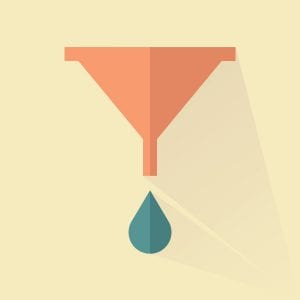 Confused about how exactly sales funnels work? You’re not alone.
Confused about how exactly sales funnels work? You’re not alone.
In fact, that’s the number one reason small business owners say they can’t get their funnels set up—they simply don’t know what to include where.
In this article, I am going to discuss what the minimal page you need to have for a sales funnel – at least for each product along the way.
You may be thinking, “I thought there are a lot of pages required for each product. How may pages do I need?”
Here’s the easy answer: At the very least, your sales funnel needs three pages.
Sales Page
This one obviously comes first. You might call it a landing page, or in the case of a free opt-in, a squeeze page. It serves one purpose—to get the reader to take action. Whether that’s to buy a product or offer up their email address in exchange for a free gift, this is the gateway into your funnel. Everything that follows depends on this page, so you want to be sure you:
Include a clear call to action—“Buy Now” or “Click here to download this report for free”
Eliminate distractions—that means no links to other websites or even a navigation bar
Address the readers’ pain points and how your offer provides the solution
Confirmation Page
Here’s where we ask the reader to confirm their intent. For a sales funnel, this confirmation page might actually be your checkout page. It’s where they enter their payment details. For a free offer, it’s simply the page your email management system directs them to next. It’s a holding page, if you will, while you wait for them to confirm their email address.
If you’re setting up a free funnel, this page has great power—and you don’t want to waste it!
Here is where you can offer an upset, remind people to follow you on social media, and give them a peak at your other products and services.
Remember, though, that they will only see this page once, so don’t put anything here that they will need to refer back to. That’s what the thank you page is for.
Thank You Page
This is where they actually collect their downloadable item, or get information about how your product will be delivered.
Like the confirmation page, this is valuable real estate, so you want to be sure you use it wisely. In addition to the downloadable item your customer just purchased (or opted in for) you also want to showcase your other offers—especially those at a slightly higher price point. Here’s why: the person looking at this page is a hot prospect. He or she is in a buying mood. You want to be sure to take advantage of that by putting your most relevant offers on this page. To encourage buying, consider including:
A limited time offer—scarcity sells, so if you can legitimately limit sales to a few hours/days or number of units, then this is the place to do so.
A “no brainer” coupon offer—an insider’s only deal can be a powerful motivator, especially if it’s a fantastic price.
Extra bonuses—give them access to additional products/services if they buy through your link on that page. These should be bonuses that aren’t advertised on the public sales page for that product. Again—insider’s deals are motivating!
Putting together a sales funnel isn’t complicated—or at least it doesn’t have to be. As your business grows and you have more products to offer, you can expand your funnel to include more upsells and downsells, but for now, this simple setup is really all you need.
That helps, to know that the funnel is actually broken down into three (or more) pages. Thanks for the insight.
Sure thing, Nita! Do you have a funnel in place?
I will be thinking about how I could use this with affiliate products. Probably, a bonus for using my link. Thanks, Paul!
That is a great idea. A lot of folks will add their bonus if someone signed up via their link. In fact, some programs have this feature built in!